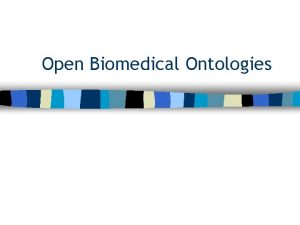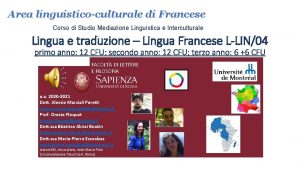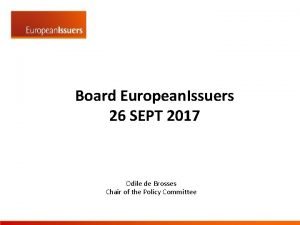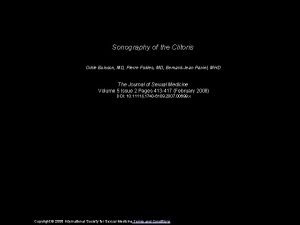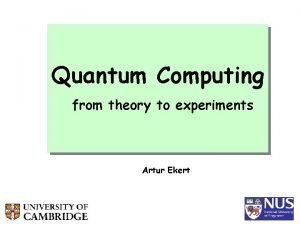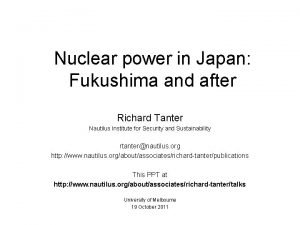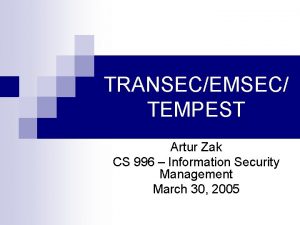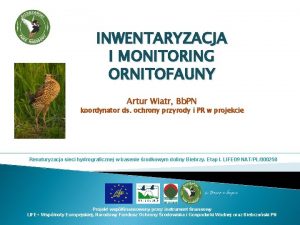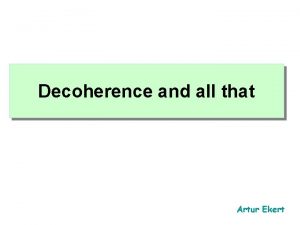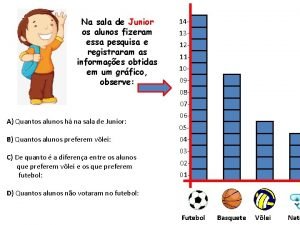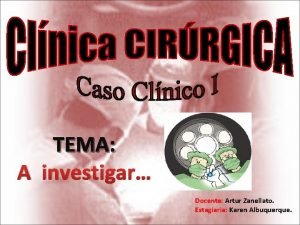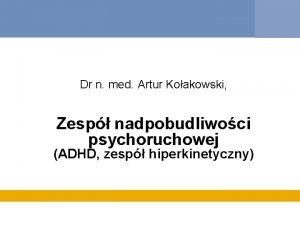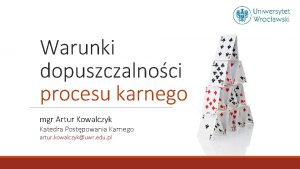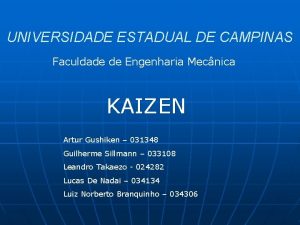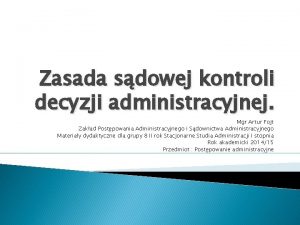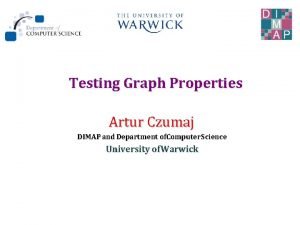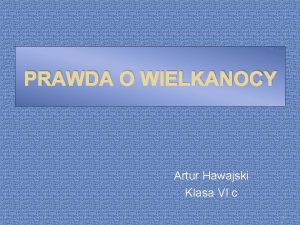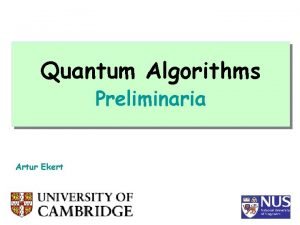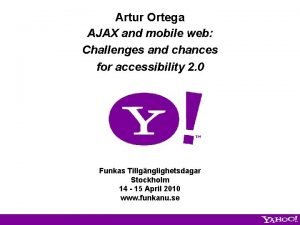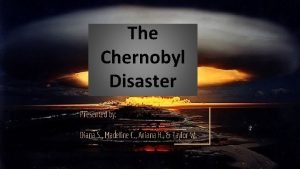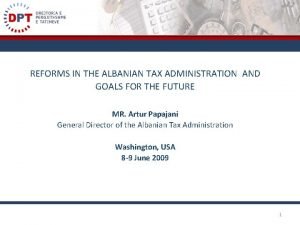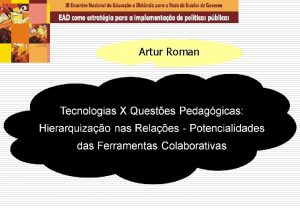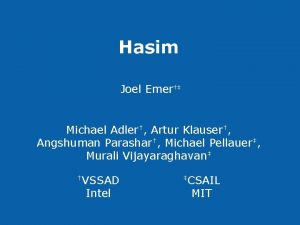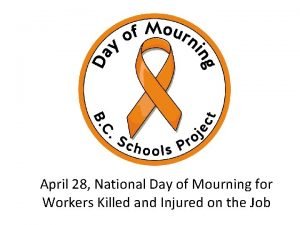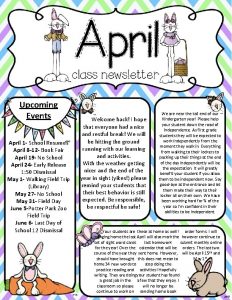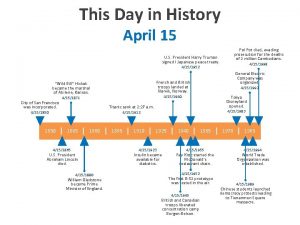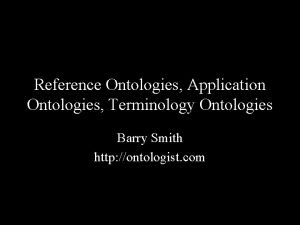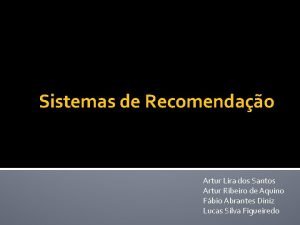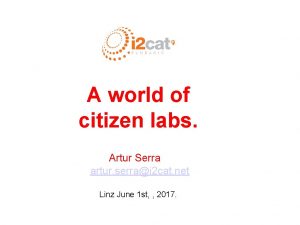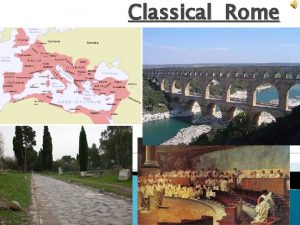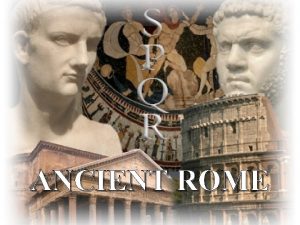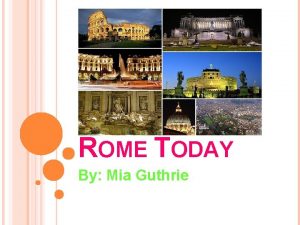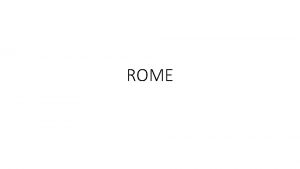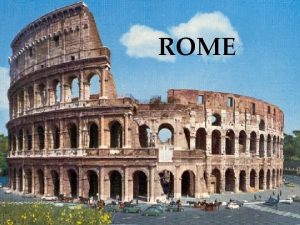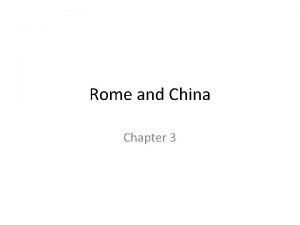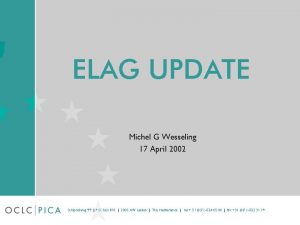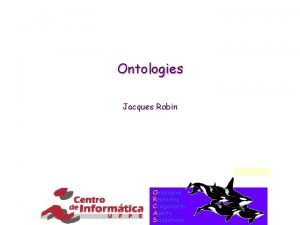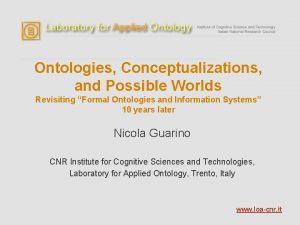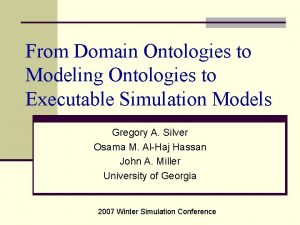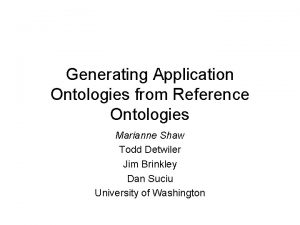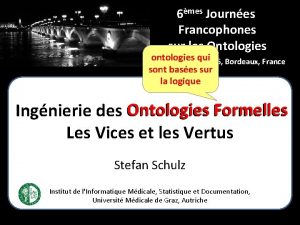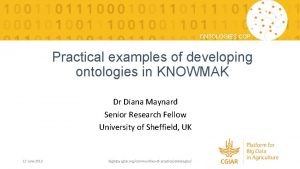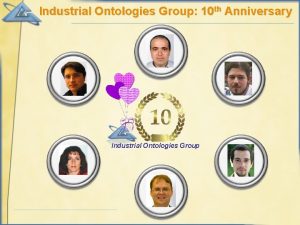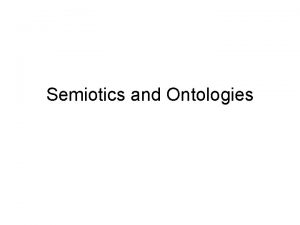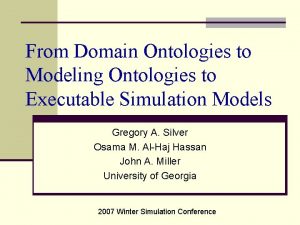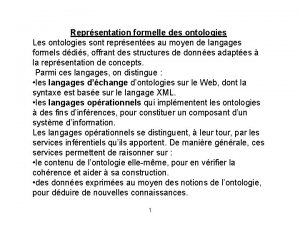ELAG Conference ROME 19 April ONTOLOGIES Odile Artur






























- Slides: 30

ELAG Conference, ROME, 19 April ONTOLOGIES Odile Artur, University of Marne-la-Vallée Nicholas Crofts, DAEL, Geneva Patrick Le Bœuf, Bn. F, Paris

– What is an ontology? Most of available definitions are of little help to the layman: “An ontology is an explicit specification of a conceptualization” Thomas R. Gruber “An ontology is a logical theory accounting for the intended meaning of a formal vocabulary” Nicola Guarino “A theory concerning the kinds of entities and specifically the kinds of abstract entities that are to be admitted to a language system” Webster’s Third New International Dictionary

Some definitions sound a bit more familiar: “An ontology is a formal explicit description of concepts in a domain of discourse (classes […]), properties of each concept […] (slots […]), and restrictions on slots (facets […])” Natalya F. Noy & Deborah L. Mc. Guinness “An ontology is a formal definition of a body of knowledge” James Hendler “An ontology is a catalog of the types of things that are assumed to exist in a domain of interest D from the perspective of a person who uses a language L for the purpose of talking about D” John F. Sowa

– What general features can we draw from all of these definitions? • A given field or domain of interest • within the boundaries of which “things” are assumed to exist, to “be” • and about which we wish to “talk” • in a formalized, explicit, and semantically consistent way To talk about what is:

– Using the CIDOC CRM ontology • • CRM = Conceptual Reference Model under development since 1996 by ICOM/CIDOC applies to the field of cultural heritage currently under consideration as a new ISO standard

– What is CIDOC CRM? • a "domain ontology" • based on an object oriented model • composed of entities, organised into a hierarchy and related to each other through property links • Version 3. 2 = over 70 entities and nearly 100 property links Wow!!! But what can I do with it? ? ?

– Conceptual reference • CRM = a basis for mutual comprehension between cultural heritage professionals and IT specialists – Cultural heritage information = a complex and subtle world – Misunderstandings in the design of information systems = $$$$$$$ – => need for clear and unambiguous communication

– Data exchange and archiving • CRM = also a technical reference for use in comparing and evaluating information systems, data schema, &c. • a basis for data transfer between incompatible systems • XML doesn't do this on its own • but CRM can be used for designing a common XML schema • CRM = also a basis for archiving of data (cf. troubles with the 1986 Domesday Project…)

– Systems design • CRM can be used as technical specification for the design of new information systems… • … but is not intended to be implemented as is • adaptation: "plug-in" points, guidelines for extension • e. g. : Geneva City’s Musinfo project

– Mediation systems • ALM information is rather isolated • Impossible to gather data in a single huge system • Mediation systems aim to federate information sources (=> single interface for users, distributed query systems) • CRM = potential basis for the mediation system's data schema

– In short, CRM can be used: • As a methodological tool in IT projects – to improve communication and help to avoid misunderstandings • As a reference for good practice – to compare and evaluate existing systems • In a technical context – to provide a basis for data archiving, exchange and integration

– In order to better understand what an ontology is, let’s make one.

– What is the specific goal of our ontology? • To describe the process of making tea, in order to have it automated? • To evaluate the quality of a specific cup of tea? • To evaluate the skills of an apprentice tea-maker? • To choose the best type of cup of tea according to time and meal? • To allow tea-houses to share differently structured data? • &c… The scope of an ontology must be precisely defined

– What is required in order to make a cup of tea? • Ingredients: tea, water, milk or lemon, sugar… • Utensils: kettle, tea-pot, tea strainer, cup, spoon… • Actions: boiling the water, pouring the boiling water into the tea-pot, pouring the water out of the tea-pot, simmering some fresh water… • Measurements: temperature of water, duration of the infusing process… • &c… All of these are the “things” assumed to exist in our domain of interest: “the making of a cup of tea”

– Is there a hierarchy among these “things”? Ingredients Utensils Actions Measurements Boiling Duration of Required Optional Tea-pot Temperature Kettle the water the infusing ingredients etc. of water etc. process Tea Water Milk Lemon Sugar

– Are we sure all of us understand these “things” the same way? • What is an “ingredient”? Please define: … • What is a “required ingredient”? Please define: … • What is an “optional ingredient”? Please define: …

– How can we describe each of these “things”? origin: beet? maple? cane? Sugar colour: brown? white? form: caster? lumps? liquid? candy? granulated? …

– What about fructose and Aspartam? Let’s create new classes and sub-classes: Sweeteners Natural sweeteners Sugar origin: … colour: … form: … Diet sweeteners Fructose Artificial sweeteners Aspartam The development of an ontology is an iterative process: an ontology needs to be evaluated, revised, evaluated…

– Do we really need all these refinements about sweeteners? • Not necessarily: depends on our purposes • Perhaps we might be just as happy with: Sweeteners type: cane sugar, beet sugar, fructose, Aspartam… form: lumps, granulated… “weightwatchingcally correct? ”: Yes or No “There is no one correct way to model a domain — there always viable alternatives” (N. F. Noy & D. L. Mc. Guinness)

– How are these “things” interrelated? Water is passive participant in Boiling has passive participant the water has as tool is tool of Kettle Are we sure all of us understand these relationships the same way? • What does “is passive participant in / has passive participant” mean? Please define: … • What does “has as tool / is tool of” mean? Please define: …

– Did you know you knew so many things about a simple cup of tea? Ontologies are related to the concept of knowledge representation

– What is a knowledge representation? (1/2) • a surrogate for what exists in the world – (unavoidably imperfect) • a set of decisions about how and what to see in the world (“ontological commitments”) – (a choice, as debatable as any choice) • a fragmentary theory of intelligent reasoning – (to select a representation technology is also to select an implicit conception of the nature of intelligent reasoning) R. Davis, H. Shrobe, P. Szolovits (1993)

– What is a knowledge representation? (2/2) • a set of ideas about how to organize information in ways that facilitate recommended inferences • a language in which we say things about the world – (a medium of expression and communication, with debatable accuracy and efficacy) • it is NOT a data structure R. Davis, H. Shrobe, P. Szolovits (1993)

– What about building a web of ontologies?

Problem: the current Web does not make a distinction between French thé and the English definite article…

… even when you specify you want “French-speaking pages” only We miss some semantics here…

Web + Knowledge Representation = Semantic Web Context Content Meaning My dorcument Intelligent searching What I actually mean Full text searching “My” + “Dorcument”

– What is the Semantic Web? Any content may find its own place in a given ontology… … So, you “just” need to link content to its relevant place in the relevant ontology(-ies)!

– How to create such links? • 1995: SHOE (Simple HTML Ontology Extension) • a pointer to an ontology • added to documents themselves • pointing to only one ontology at a time • DAML+OIL (DARPA Agent Markup Language + Ontology Interchange Language) • language based on RDF and XML • information on separate files (. daml) • may point to several ontologies • N 3 (Notation of Triples) • simplified language to express DAML+OIL

Who will do this? Content Ontology Document • Search engines • Other applications . daml file Ontology
 Obo
Obo Odile campestre
Odile campestre Odile de brosses
Odile de brosses Salinditis
Salinditis Odile clement
Odile clement Odile chambin
Odile chambin Hhuuhu
Hhuuhu Tsjernobyl elephant foot
Tsjernobyl elephant foot Artur żak
Artur żak Artur wiatr
Artur wiatr Artur ekert
Artur ekert Artur steiner
Artur steiner Observe o grafico de brinquedos de artur
Observe o grafico de brinquedos de artur Artur zanellato
Artur zanellato Dr artur kołakowski
Dr artur kołakowski Artur kowalczyk uwr
Artur kowalczyk uwr Artur gushiken
Artur gushiken Artur fojt
Artur fojt Artur czumaj
Artur czumaj Artur ekert
Artur ekert Preliminaria
Preliminaria Artur ortega
Artur ortega Slidetodoc.com
Slidetodoc.com Artur papajani
Artur papajani Arturroman
Arturroman Artur czumaj
Artur czumaj Artur klauser
Artur klauser April 28 day of mourning
April 28 day of mourning April school activities
April school activities This day in history april 15
This day in history april 15 April 23 shakespeare
April 23 shakespeare
